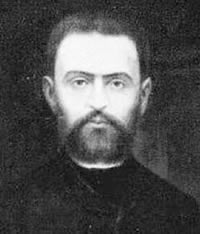Strain Energy Method (Castigliano’s Theorem) | Beam Deflection

Engr. Alberto Castigliano
Italian engineer Alberto Castigliano (1847 – 1884) developed a method of determining deflection of structures by strain energy method. His Theorem of the Derivatives of Internal Work of Deformation extended its application to the calculation of relative rotations and displacements between points in the structure and to the study of beams in flexure.
Energy of structure is its capacity of doing work and strain energy is the internal energy in the structure because of its deformation. By the principle of conservation of energy,
where $U$ denotes the strain energy and $W_i$ represents the work done by internal forces. The expression of strain energy depends therefore on the internal forces that can develop in the member due to applied external forces.
Castigliano’s Theorem for Beam Deflection
For linearly elastic structures, the partial derivative of the strain energy with respect to an applied force (or couple) is equal to the displacement (or rotation) of the force (or couple) along its line of action.
Where $\delta$ is the deflection at the point of application of force $P$ in the direction of $P$, $\theta$ is the rotation at the point of application of the couple $\bar{M}$ in the direction of $\bar{M}$, and $U$ is the strain energy.
The strain energy of a beam was known to be $U = \displaystyle \int_0^L \dfrac{M^2}{2EI}dx$ . Finding the partial derivative of this expression will give us the equations of Castigliano’s deflection and rotation of beams. The equations are written below for convenience.
- Log in to post comments
